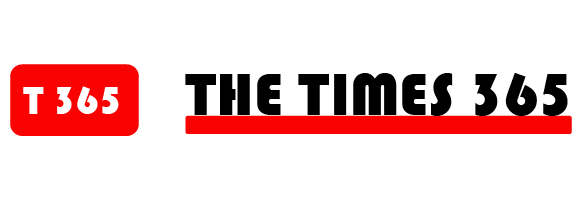In the 20th century model of retirement, people saved a nest egg over the course of a 40-50 year career. They then gradually spent down that nest egg in retirement and hoped they didn’t run out of money before they died (“superannuation,” in finance parlance).
The model raises several questions, none more glaring than “How much should I save for retirement?”
But for those who think outside the box, it also makes you wonder: “What if I want to retire young?” How does it change the math, and how can you reach financial independence early?
As you start planning your financial endgame—regardless of your current age—consider the following your five-minute crash course in retirement planning.
Safe Withdrawal Rates for Paper Assets
The old model for retirement planning generally stuck to paper assets such as stocks and bonds. Over time, retirees sold off their portfolio of assets in order to fund their living expenses.
Which begs the question of how much of your portfolio you can safely sell off each year, referred to by financial planners as a safe withdrawal rate.
Related: 9 Things 20-Somethings Should Do to Be Financially Free by 40
Back in the 1990s, financial planner Bill Bengen reviewed how stocks and bonds performed over the last century and determined that a withdrawal rate of 4% of your portfolio would have consistently left your nest egg intact for at least 30 years of retirement. Thus the 4% rule was born.
To clarify, that’s 4% of your nest egg in the first year of retirement, followed by a small cost-of-living adjustment each year thereafter to keep pace with inflation—not 4% of your portfolio’s current balance in any given year.
You can invert that math to come up with a target for your retirement savings. By multiplying your target annual retirement income by 25, you can calculate how much you need to save if you plan to follow the 4% rule. For example, if you want to withdraw $40,000 per year from your nest egg to cover living expenses, you need $1 million (4% of $1 million is $40,000).
Find it disheartening that a $1 million retirement only yields $40,000 of annual income? I do. Fortunately, you’re not limited to paper assets.
Sources of “Forever Income”
I don’t like the idea of my net worth shrinking, the fear of running out of money before I kick the bucket. Besides, I want to create generational wealth that leaves my descendants moneyed in perpetuity.
If you don’t want to spend down your nest egg in retirement, you need sources of ongoing passive income, what I call forever income.
Rental Properties
Rental properties generate ongoing income, with no need to sell off the underlying assets. But that’s only one of the many ways rentals can boost your retirement.
Related: 8 Ways to Use Rental Properties to Create Retirement Income
Landlords can raise the rent each year to keep pace with inflation, so the returns automatically adjust for inflation over time. Rental properties come with tax advantages such as a wealth of deductions and even paper losses like depreciation.
You can leverage other people’s money to buy them. Then your tenants pay off your mortgage for you.
For that matter, leverage accelerates your cash flow growth over time. Your mortgage payment remains fixed, even as your rental income grows each year as rents rise.
Of course, rentals come with their own downsides, such as high barriers to entry, high labor required both on the acquisition side and the ongoing management side, and risks such as property damage, bad tenants, unpaid rents, future regulatory changes (such as eviction moratoriums), and lawsuits. So while they can play an important role in your retirement planning, they shouldn’t form your only source of income.
Dividends
Some equities pay dividends, ongoing income to shareholders. Most people think of stocks when they hear the word dividends, and they too should play a role, although stocks aren’t the only type of equity that pay dividends.
Related: Real Estate vs. Stocks: Which Has Been the Better Investment Over 145 Years?
Real estate investment trusts (REITs) pay high dividends—by law, they must pay shareholders 90% of their annual profits in dividends. Which means high yields, but limited opportunity for growth.
Many real estate crowdfunding platforms also pay strong dividends. They fall under less regulation than publicly-traded REITs, and have greater flexibility to reinvest profits into buying more properties to grow their share prices.
For reliable dividend payments from stocks, look at buying shares in “dividend aristocrat” funds or stocks, with a decades-long track record of paying out high dividend yields. But don’t stop at large cap U.S. stocks; aim to diversify with low- and mid-cap stocks and funds, along with international equity funds for greater safety and potentially higher returns.
Bonds
Bonds are loans, issued by either a government or a corporation. They pay a set interest rate for a set term, and at the end of the term the bond matures and you get your principal investment back. Because of this fixed, preset nature, investors often refer to them as fixed-income investments.
Historically, investors have viewed bonds as safer investments than stocks. They’re certainly less volatile. But they come with two enormous downsides: first, they’ve paid weak returns in the 21st century, as central banks have held interest rates low. Second, the returns get diluted by inflation.
Imagine you buy a bond paying 3% with a one year maturity. But over the course of that year, inflation runs at 2%, so your net return at the end of the year is only 1%. Not exactly a path to building great wealth.
Still, bonds do offer ongoing income, and the only loss in value comes from inflation or if you sell the bonds. You can theoretically buy and hold bonds and live off the interest, and when they mature, you can reinvest the principal. Just know that the value of that principal diminishes each passing year along with inflation.
Start a Business
Part of my retirement plan includes my business.
At the moment, it still requires full-time work from me to grow and build. But the day will come when I can gradually write myself out of the business plan, hiring people to take on most or even all of the tasks I perform currently.
I can be as involved or removed as I like. That’s the beauty of entrepreneurship.
Related: 3 Reasons to Start a New Business During Retirement
Like every asset listed above, it requires investment. Investment of money, but also a significant investment of time, which paper assets don’t require.
The wealthiest people in the world aren’t doctors or lawyers. They’re entrepreneurs. But starting a business comes with high risk and an enormous amount of work, with no guarantee of success. Quite the opposite: roughly half of businesses fail within the first five years.
Do it right, however, and starting your own business can generate income and wealth long after you stop working in the trenches every day. You can even start a fun, low-cost business after retiring, to earn some money while staying busy and continuing to give back.
A Diversified Model for Financial Independence
You can reach financial independence and retire at any age, if you start young and maintain a high savings rate, pumping much of your income into investments.
My financial independence plan involves multiple prongs, including rental properties, stocks, indirect real estate investments such as crowdfunding, and my online business. I expect to earn roughly 40% of my post-FIRE income from rental properties, another 40% from stocks and crowdfunding investments, and the rest from my business.
And, while not technically under the definition of financial independence, I plan to keep earning active income indefinitely. It doesn’t have to be high-intensity work—I might write novels, or pour wines at a local winery, or host a bed and breakfast. I’ll probably keep freelance writing forever, since it’s fun and I can do it on my own schedule.
Because as you approach financial independence, you can work on your own terms, doing what you love.
Sample Retirement Numbers: Getting Creative
Leslie wants to retire at 45 with $60,000 in annual income. How much does she need?
Related: The Simple Math of Early Retirement With Real Estate [With Real-Life Example!]
Let’s say $10,000 of that will come from stocks. Whether she buys stock funds with a 3.5% yield or uses a withdrawal rate of 3.5% (which historically would mean an ever-growing portfolio, as CFP Michael Kitces demonstrates), that means she needs $285,714 in stock assets (100% / 3.5% = 28.5714).
She wants another $10,000 from her real estate crowdfunding investments, which earn an average of 6% yield. To account for the risk of default, she drops that expected yield to 5%, which means she needs $200,000 to generate $10,000 in reliable annual income.
Leslie gets more aggressive with her rental investments, and wants $25,000 per year in net rental income. Using the BRRRR method, she gets to largely recycle the same funds repeatedly to build her portfolio, putting the same $100,000 to use again and again. But it means high leverage and low cash flow from each property, so she ends up with 10 rentals each generating $2,500 per year in net income.
That leaves $15,000 in remaining income, which she earns through her online business and occasional freelance work. Work that she does as much or as little as she likes, and she ends up continuing to earn more than she spends to keep growing her net worth.
All in all, she invested $585,714, gets to work on her own terms, and live anywhere in the world.
Final Thoughts
The less you spend, the less you need to save and invest for retirement.
Think of it this way: If you follow the 4% rule, then for every $1 you want to spend in retirement, you need to save $25. It puts your living expenses into perspective—if you spend $1,000/year on your cable TV bill ($83.33/month), that right there constitutes $25,000 you need to save and invest for retirement. Is cable TV worth an extra $25,000 in slaving and saving?
Cable TV makes an easy example of the trivial things we blow money on, but the real potential for saving money and living on less come from just a few large expenses. Historically, Americans spend roughly two-thirds of their income on just three costs: housing, transportation, and food.
As you plan for retirement, consider downsizing, house hacking, or otherwise reducing your housing expenses first and foremost. Then look to get rid of at least one car, and ideally all of them. My family lives without a car, walking and biking nearly everywhere, and taking an Uber when we need to go further afield.
Spend less, save more, earn more, reach financial independence faster.
How do you plan to invest and pay for your own retirement? At what age do you want to reach financial independence and potentially retire?
Share your thoughts in the comment section below.
Note By BiggerPockets: These are opinions written by the author and do not necessarily represent the opinions of BiggerPockets.







